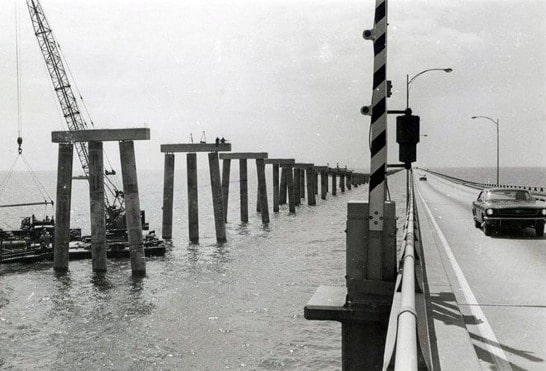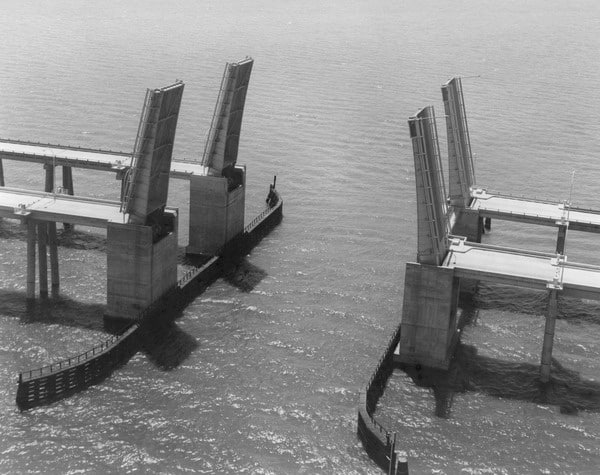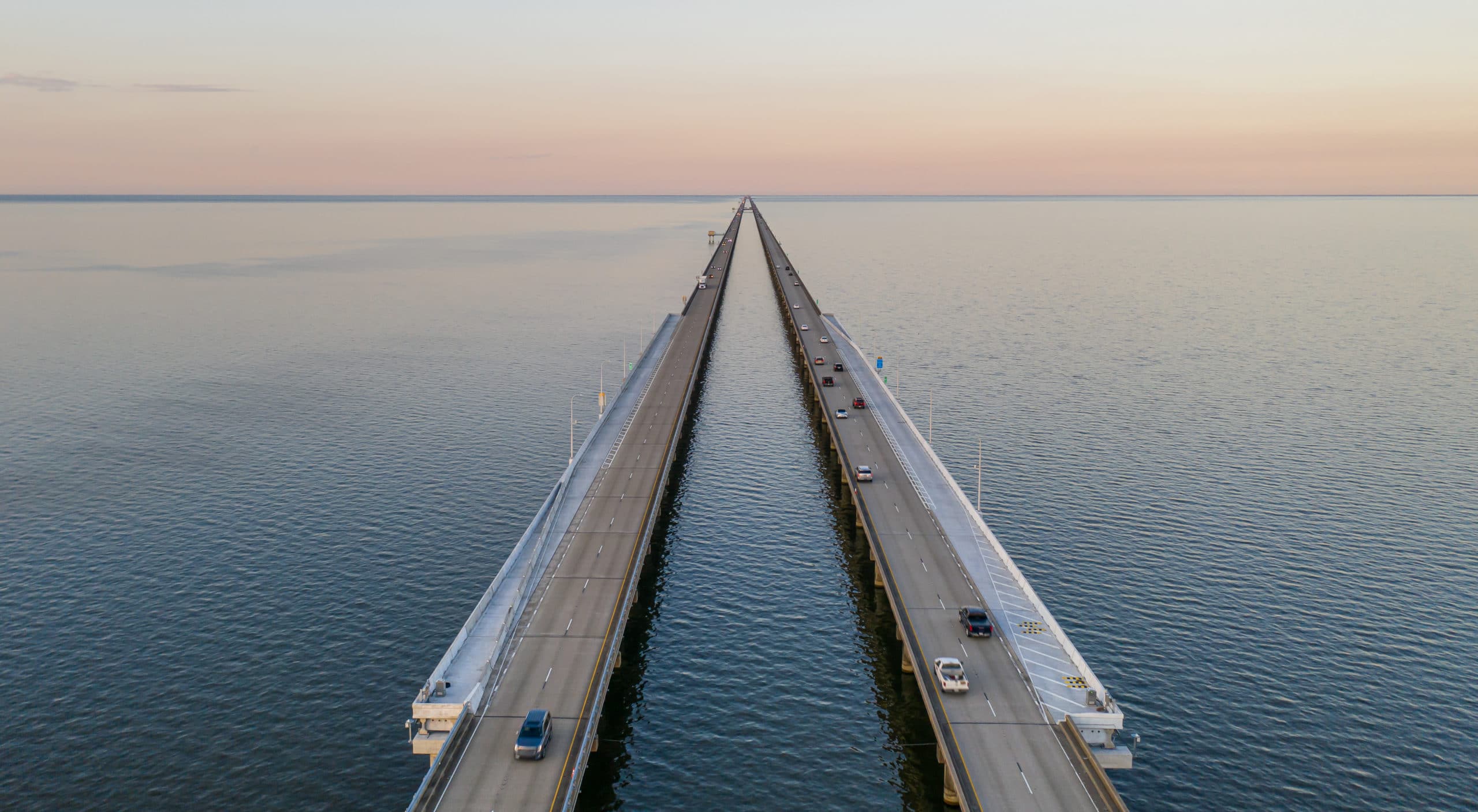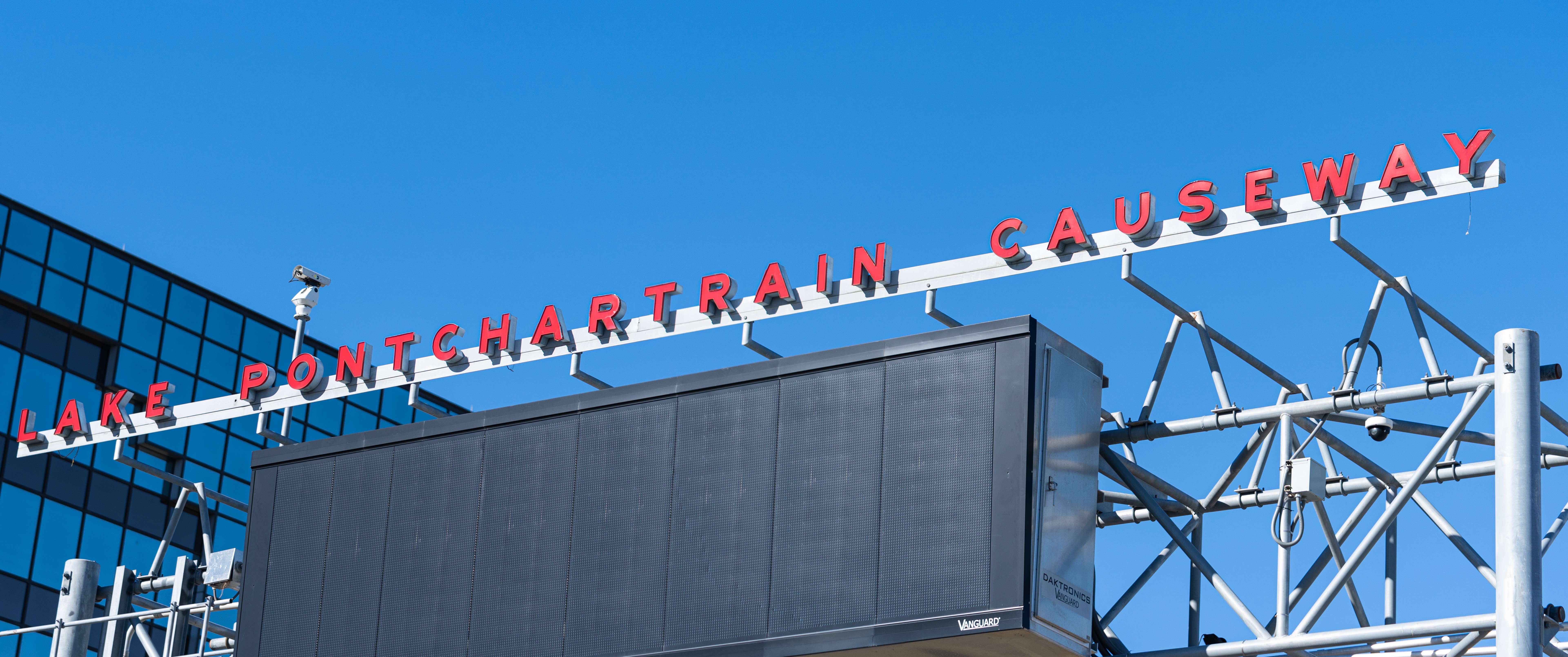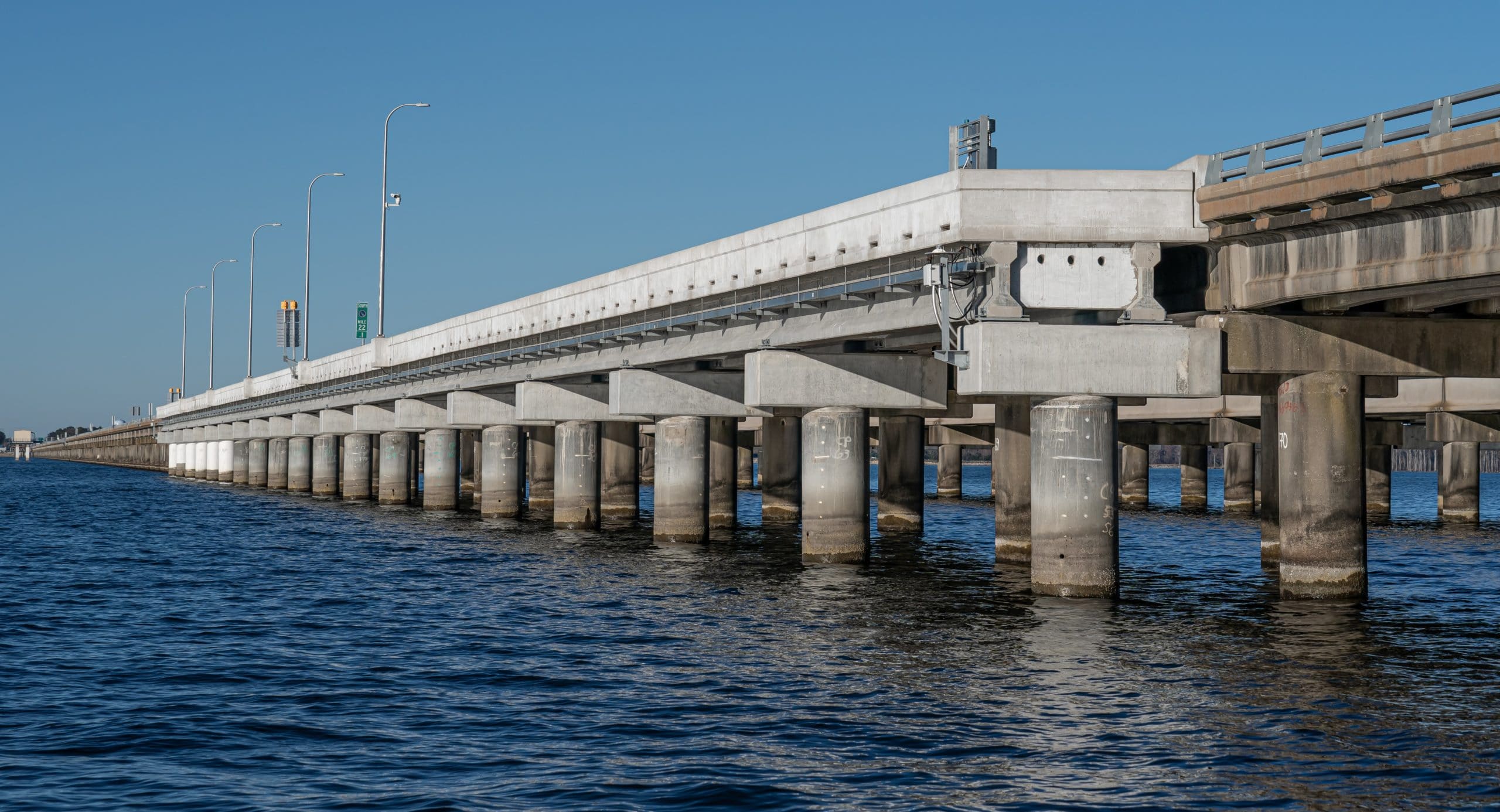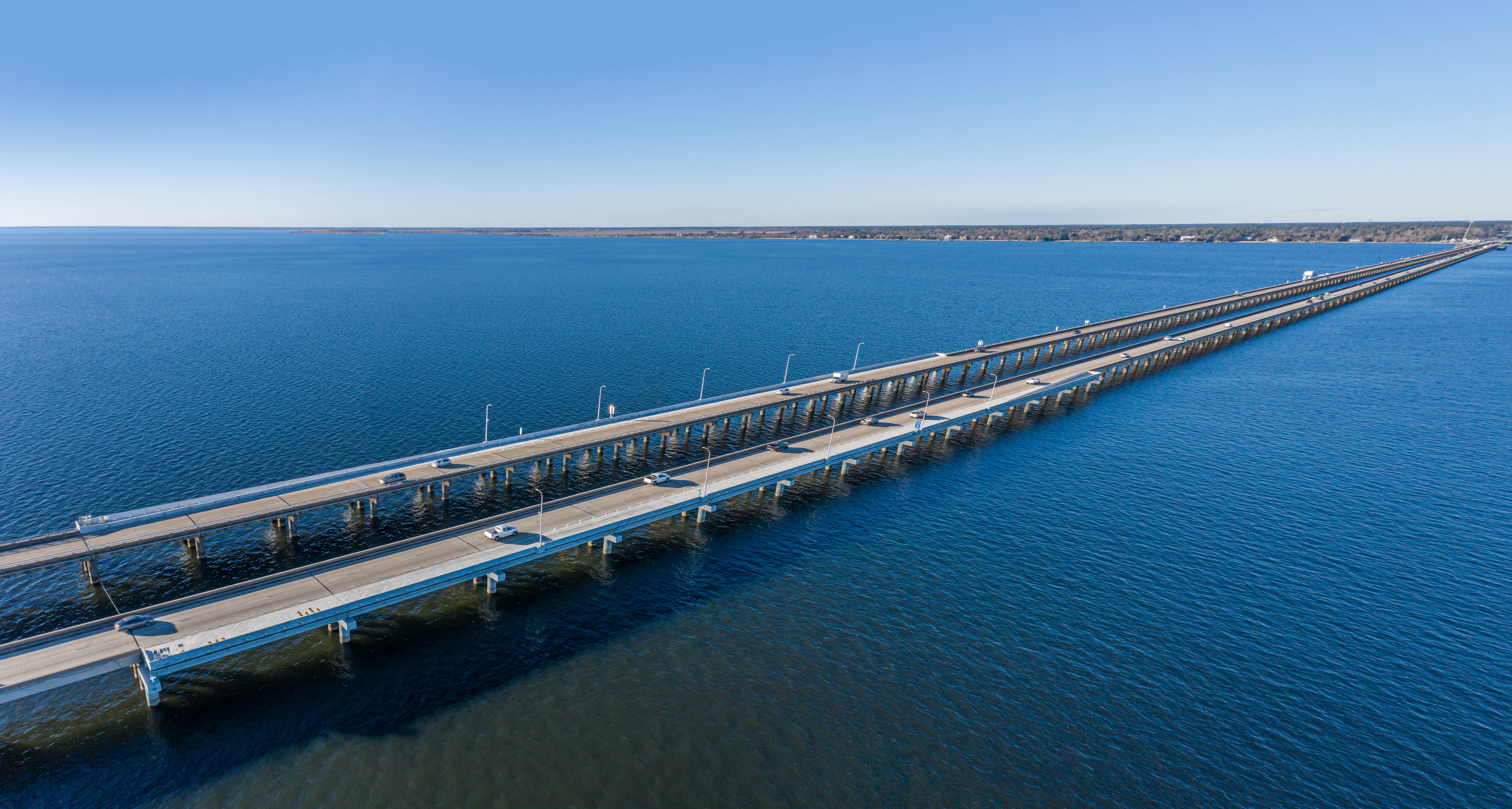Lake Pontchartrain Causeway
Volkert and Louisiana’s Lake Pontchartrain Causeway—the longest continuous bridge over water in the world—have been linked for over fifty years.
In 1956, the original two-lane, 24-mile-long Causeway bridge was constructed to connect New Orleans and Mandeville, allowing for decreased travel time throughout that part of the state. By 1965, it became clear that a parallel bridge was needed to relieve heavy traffic issues.
In the late 1960s, Volkert conducted feasibility studies, preliminary and final design plans, and construction inspection of the new parallel bridge for the Causeway Commission. The new bridge became the northbound lanes while the original bridge served as the southbound lanes.
The original north bascule span was removed, and two twin bascule spans were constructed. The south bascule was also removed and replaced with a high-level fixed span. Seven crossovers were constructed to allow for rerouting of traffic in case of an emergency. Volkert also provided tolling, electrical, and traffic control services.
For the next two decades, Volkert served as the consultant for the Causeway Commission, performing an annual inspection of the entire bridge. In the mid-80s, Volkert asked to conduct an in-depth study of the bascule system to determine its status. The study revealed that a total rehabilitation was required.
Volkert’s recommendation was to incorporate new state-of-the-art components while retaining some of the original components, which were still in good working order. This solution was not only cost effective, but it shortened construction time.
In 2017, Volkert presented the winning design and estimate for the Greater New Orleans Expressway Commission’s $53 million shoulder-addition project. Volkert is providing construction administration for this, the first bridge in Louisiana to use Construction Management at Risk (CMAR) project delivery.
The objective is to give motorists a safe place to pull out of the main flow of traffic in the event of an accident or breakdown. These bays provide an intermittent shoulder along the Causeway in both directions, far less expensive than full emergency lanes.
The project entails building 12 bays, each 1,008 feet long by 16 feet wide, along the outside of both spans, six per side at regular intervals. Crews will drive 192 piles into Lake Pontchartrain. They will then place caps on the piles, which will serve as the foundations of the new emergency shoulders. Finally, sections of the shoulders will be barged to construction sites and hoisted into place. Because the work is being done via barge, impacts to traffic are minimal.Volkert’s design of the new bridge, specifically the twin bascule spans over the north channel, won the 1969 American Institute of Steel Construction (AISC) Prize Bridge Award in the movable span category. In 2014, the Louisiana Section of the American Society of Civil Engineers (ASCE) named the Causeway as one of the state’s top fifteen civil engineering projects of all time. The honor came as part of the Louisiana ASCE’s 100th anniversary celebration.
Location
New Orleans, Louisiana
Client
Greater New Orleans Expressway Commission

